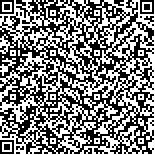| 本文已被:浏览 829次 下载 275次 |

码上扫一扫! |
|
|
| 钠离子通道1.8对急性心肌梗死后心房颤动发生的调控作用 |
|
齐保振1, 谢钟磊1, 沈冬丽1, 代世摩1, 张春瑜1, 林佳雄1, 刘少稳2, 聂振宁1, 周京敏1, 钱菊英1, 葛均波1
|
|
1.复旦大学附属中山医院心内科, 上海市心血管病研究所, 国家放射与治疗临床医学研究中心, 上海市放射与治疗(介入治疗)临床医学研究中心, 上海 200032;2.上海交通大学附属第一人民医院心内科, 上海 200080
|
|
| 摘要: |
| 目的 探讨阻断心脏神经节丛(ganglionated plexi, GP)的电压门控钠离子通道1.8(NaV1.8)对急性心肌梗死后心房颤动发生的影响。方法 将12只雄性比格犬随机分为A-803467组(NaV1.8阻断剂, n=6)及对照组(DMSO,n=6)。构建急性心肌梗死模型后,A-803467组于4个主要GP表面多点注射A-803467(1 μmol/0.5 mL),对照组注射DMSO(1 μmol/0.5 mL)。记录用药前及用药后30 min、60 min及90 min,两组犬的窦性心率、心房有效不应期、心房易损窗口及心房颤动持续时长的变化情况;记录用药后10 min高频电刺激(20 Hz, 0.1 ms, 方波)右前GP引起的窦性心率变化情况。结果 与对照组相比,A-803467可提高窦性心率,显著缩短心房有效不应期,增宽心房易损窗口,延长心房颤动时长。此外,A-803467可抑制高频电刺激右前GP导致的窦性心率减慢。结论 阻断GP的NaV1.8可提高急性心肌梗死后心房颤动的诱发性。NaV1.8可调控急性心肌梗死后心房颤动的发生,其作用机制可能与调控心脏GP的功能有关。 |
| 关键词: 心房颤动 急性心肌梗死 钠离子通道 心脏神经节丛 电生理 |
| DOI:10.12025/j.issn.1008-6358.2023.20221932 |
| 分类号: |
| 基金项目:国家自然科学基金(81500248),上海市自然科学基金(22ZR1411500),上海市放射与治疗(介入治疗)临床医学研究中心(19MC1910300). |
|
| The regulation effect of NaV1.8 channels on atrial fibrillation inducibility after acute myocardial infarction |
|
QI Bao-zhen1, XIE Zhong-lei1, SHEN Dong-li1, DAI Shi-mo1, ZHANG Chun-yu1, LIN Jia-xiong1, LIU Shao-wen2, NIE Zhenning1, ZHOU Jing-min1, QIAN Ju-ying1, GE Jun-bo1
|
|
1.Department of Cardiology, Zhongshan Hospital, Fudan University, Shanghai Institute of Cardiovascular Diseases, National Clinical Research Center for Interventional Medicine, Shanghai Clinical Research Center for Interventional Medicine, Shanghai 200032, China;2.Department of Cardiology, Shanghai General Hospital, Shanghai Jiao Tong University School of Medicine, Shanghai 200080, China
|
| Abstract: |
| Objective To explore the effects of blocking NaV1.8 channels in cardiac ganglionated plexi (GP) on atrial fibrillation after acute myocardial infarction. Methods A total of 12 male beagles were randomly enrolled. NaV1.8 channels blocker A-803467 (n=6) or DMSO (n=6, control) was injected. Sinus rate (SR), atrial effective refractory period (AERP), the atrial cumulative window of vulnerability and duration of atrial fibrillation were measured before and 30 min, 60 min, 90 min after A-803467 or DMSO injection. The SR changes induced by high-frequency electrical stimulation (20 Hz, 0.1 ms, square wave) in the right anterior GP were recorded 10 min after injection. Results Compared with the control group, A-803467 significantly increased SR, shortened the AERP, widened the atrial cumulative window of vulnerability and prolonged the duration of atrial fibrillation. In addition, A-803467 suppressed the SR slowness induced by high-frequency electrical stimulation of the right anterior GP. Conclusions Blocking NaV1.8 increases the atrial fibrillation inducibility after acute myocardial infarction, and the underlying mechanism may be related to the regulation of the neural activity of the cardiac GP. |
| Key words: atrial fibrillation acute myocardial infarction sodium channel cardiac ganglionated plexi electrophysiology |